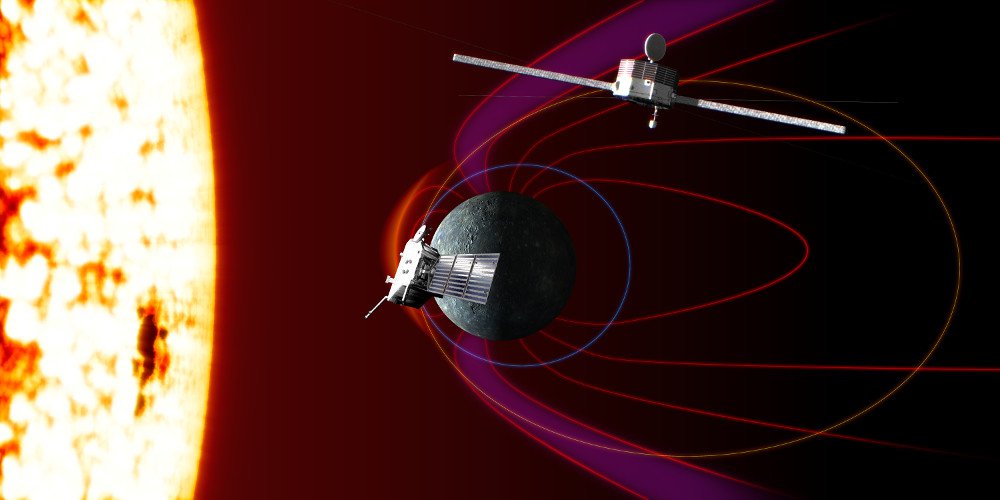
Oct. 22, 2018
Feature Story
BepiColombo Launches For Mercury
BepiColombo began its seven year journey to Mercury

Artist illustration of the BepiColombo orbiters, MIO and Bepi, around Mercury.Image credit: JAXA.
At 01:45 GMT on Friday, October 19, 2018, the BepiColombo mission began its seven-year journey to the Solar Systems innermost planet, Mercury. BepiColombo is a joint mission between the European Space Agency (ESA) and the Japan Aerospace Exploration Agency (JAXA). The mission is named for Italian mathematician, Giuseppe “Bepi” Colombo, who calculated the orbital trajectory for NASA’s Mariner 10 mission, which was the first mission to make multiple fly-bys of Mercury.
Elizabeth Tasker recently covered BepiColombo for the Many Worlds Blog, and the post is available here.
Animation visualising BepiColombo’s launch and cruise to Mercury. Some aspects have been simplified for the purpose of this animation. Credit: ESA
Mercury is the smallest and least explored of our solar system’s planets. Prior to BepiColombo, Mercury has only been visit by NASA’s Mariner 10 (launched in 1973) and MESSENGER (launched in 2004) missions.
Meet Bepi, Mio and MTM, three new space explorers about to start an extraordinary journey to Mercury, a planet of extremes and mysteries. Credit: ESA
BepiColombo is comprised of two separate orbiters: the Mercury Planetary Orbiter (MPO) and the Mercury Magnetospheric Orbiter (MMO). At Mercury, the mission’s primary scientific goals are to collect data concerning the planet’s:
The spacecraft will also help reearchers study the interaction of Mercury with the solar wind, and the conditions of the space environment near the planet.

The BepiColombo Mercury Transfer Module (MTM) has returned the mission's first image from space on Oct 20, 2018. This view is along one of the extended solar arrays. The structure in the bottom left corner is one of the sun sensors on the MTM.Image credit: ESA/BepiColombo/MTM, CC BY-SA 3.0 IGO.

MESSENGER features in Issue #3 of Astrobiology: The Story of our Search for Life in the Universe, available at: https://astrobiology.nasa.gov/resources/graphic-histories/Image credit: Aaron L. Gronstal, NASA Astrobiology.